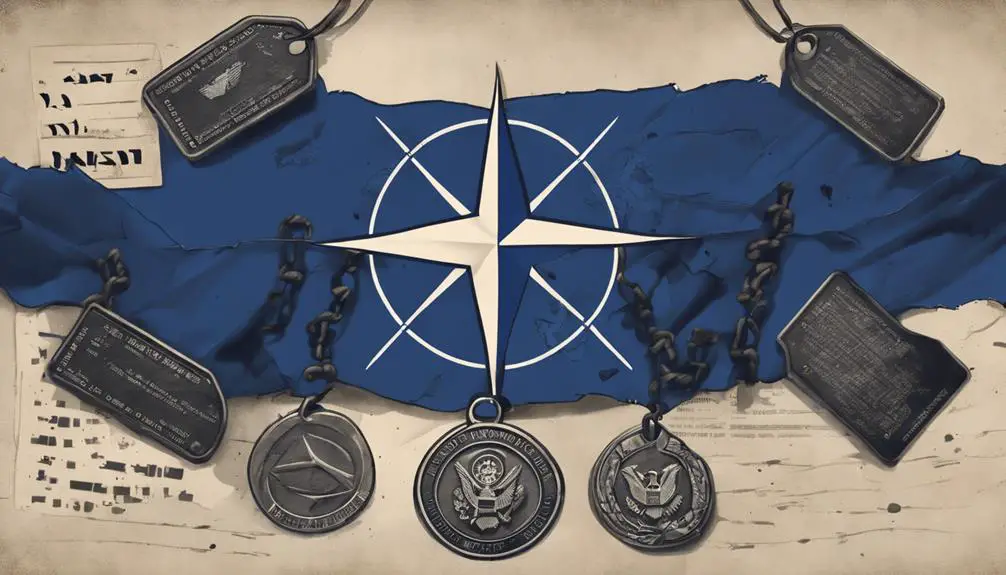You're looking to crack the code of NATO's military slang. You'll need to familiarize yourself with the phonetic alphabet, essential acronyms like OPORD and FRAGO, and slang for the chain of command. Combat communication abbreviations like SITREP and CAS will become second nature, and you'll learn to navigate the nuances of officer etiquette. As you venture deeper, you'll discover mission-critical colloquialisms like "Oscar Mike" and "HOOAH," which foster camaraderie among military personnel. The more you grasp these terms, the clearer your understanding of NATO's high-stakes communication will become – and there's still more to uncover.
Decoding NATO's Phonetic Alphabet
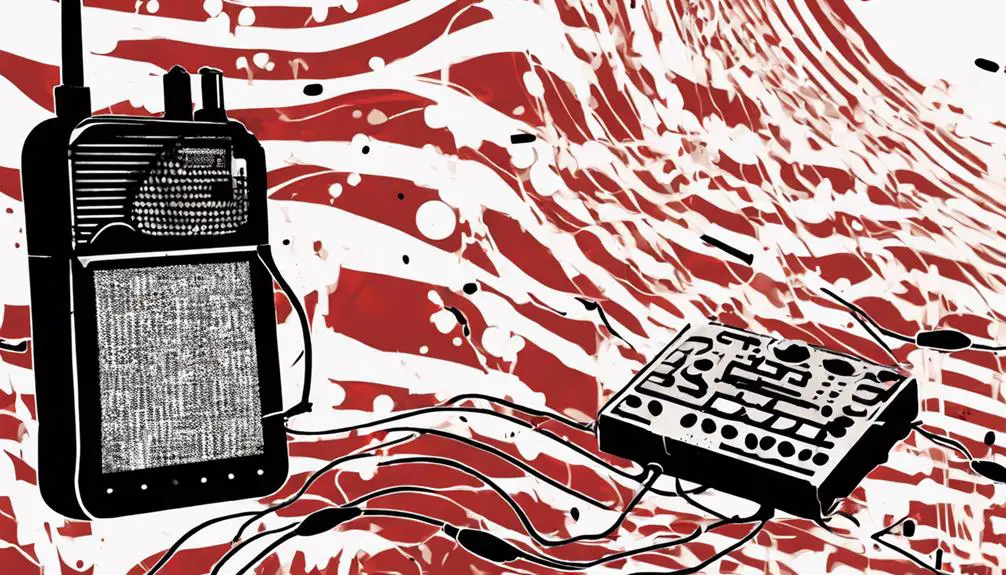
When you're communicating critical information over radio or phone lines, you'll need to enunciate clearly, and that's where NATO's phonetic alphabet comes in – a standardized system that replaces each letter with a code word to guarantee confusion. This alphabet originated in the 1920s as the International Telecommunication Union (ITU) phonetic alphabet, designed to clarify radio communications during times of poor transmission quality. In the 1950s, NATO adopted a modified version, which has since become the global standard for radio communication. The phonetic alphabet is essential for accurate transmission of critical information, such as coordinates, call signs, and passwords. By using code words like 'Alpha' for 'A' and 'Bravo' for 'B', you can guarantee that your message is received correctly, even in high-stress or noisy environments. With its widespread adoption, NATO's phonetic alphabet has become an indispensable tool for clear and effective international radio communication.
Essential Acronyms for Operations
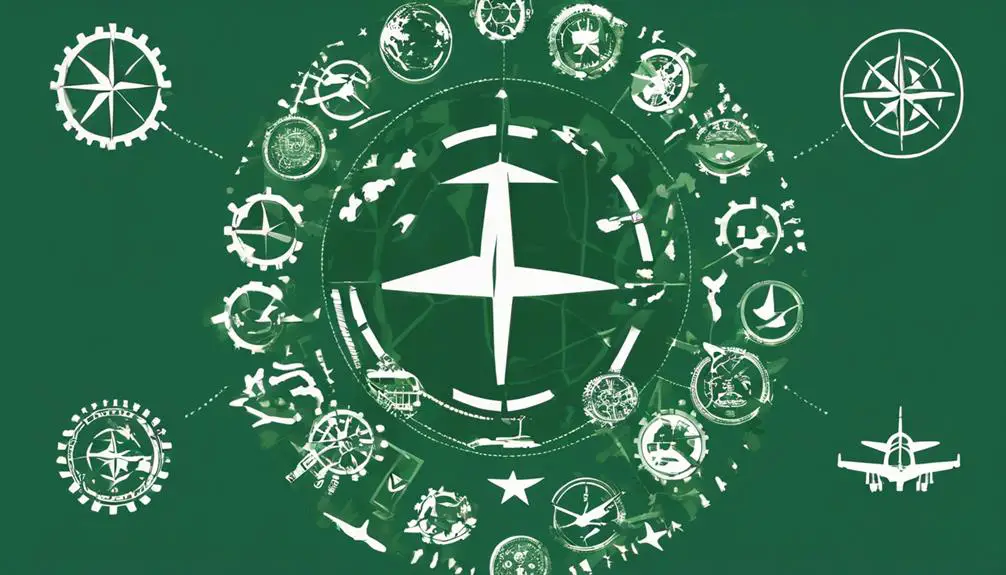
You'll encounter several essential acronyms in military operations, each serving a specific purpose in facilitating clear communication and efficient decision-making. These acronyms are pivotal in operation planning, ensuring that teams are on the same page. Familiarizing yourself with these acronyms will help you navigate complex operations with ease.
In tactical communication, codes like OPORD (Operations Order) and FRAGO (Fragmentary Order) are used to convey critical information. OPORD outlines the overall plan, while FRAGO provides updates or changes to the original plan. Other essential acronyms include COA (Course of Action), which outlines potential strategies, and IPB (Intelligence Preparation of the Battlefield), which provides critical intel on the operational environment.
Mastering these operation planning acronyms and tactical communication codes is essential for effective communication and successful mission execution. By understanding these acronyms, you'll be able to quickly comprehend complex information, making you a valuable asset in military operations.
Slang for NATO's Chain of Command

As you move up the ranks, you'll need to familiarize yourself with the slang used to describe NATO's chain of command, which can be just as important as understanding OPORDs and FRAGOs in facilitating effective communication. In NATO's rank structure, nuances can have a notable impact on your relationships with superiors and subordinates. For instance, a 'six' refers to a commander or officer in charge, while a 'boss' is a more informal term for a superior officer.
When interacting with higher-ranking officers, remember that officer etiquette expectations are essential. Addressing a senior officer as 'sir' or 'ma'am' is a sign of respect, and using their title (e.g., 'Colonel' or 'General') is necessary. You should also be aware of the proper protocols when saluting, such as rendering a salute to all officers senior to you. Understanding these subtleties will help you navigate the complex hierarchy of NATO's chain of command and make sure you're taken seriously by your peers and superiors.
Combat Communication Abbreviations
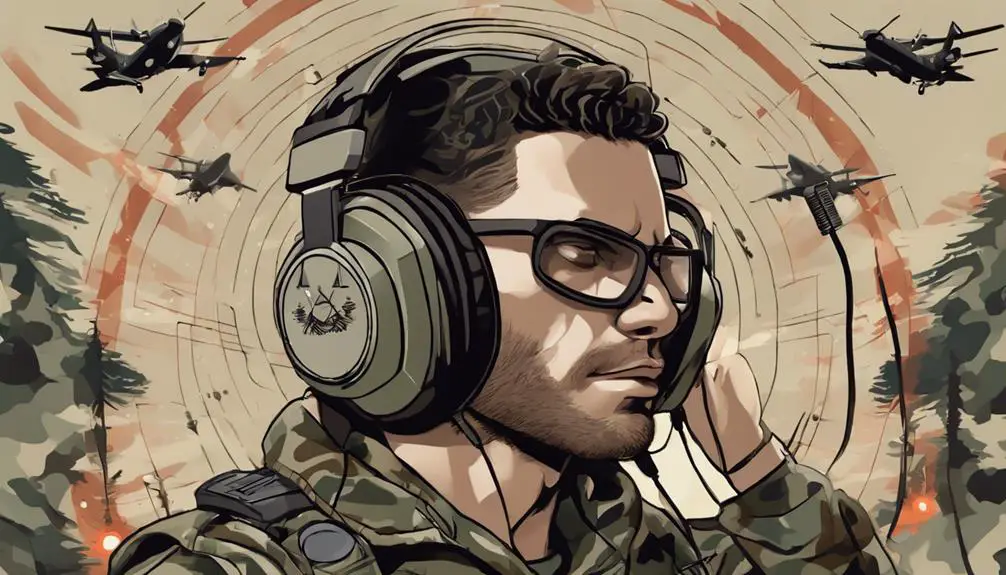
In combat situations, clear and concise communication is essential, and using abbreviations like 'SITREP' for situation report or 'CAS' for close air support can greatly reduce transmission time and minimize confusion. You'll quickly realize that understanding these abbreviations is critical for effective communication on the battlefield. When using radio protocol, nuances like these abbreviations can make all the difference in high-pressure situations. Tactical frequency management is also important, as it guarantees that communication channels remain clear and organized. By using standardized abbreviations and adhering to strict radio protocols, you'll be able to convey crucial information quickly and accurately. This, in turn, enables swift decision-making and efficient execution of orders. As you operate in a fast-paced combat environment, mastering combat communication abbreviations and radio protocol nuances will become second nature, allowing you to focus on the task at hand.
Mission-Critical Colloquialisms Explained
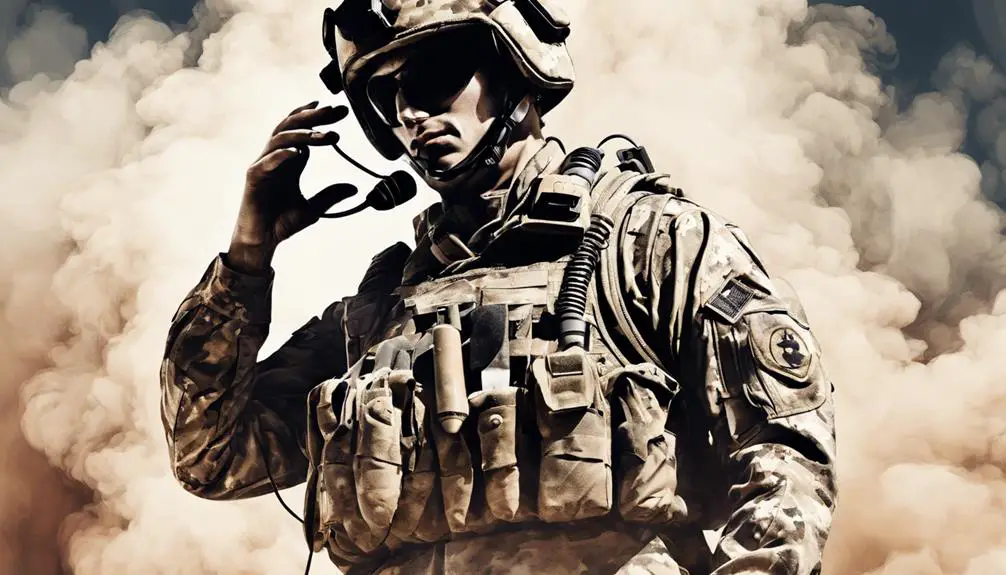
During high-stakes operations, exploring colloquialisms like 'Oscar Mike' for 'on the move' or 'SITREP' for situation report become essential components of mission-critical communication. You'll hear these phrases used by military personnel to convey complex information quickly and efficiently. As you investigate further into the world of military slang, you'll discover that these colloquialisms aren't limited to the battlefield. Military lingo has seeped into popular culture, with phrases like 'HOOAH' (Heard, Understood, Acknowledged) and 'BOHICA' (Bend Over, Here It Comes Again) becoming ingrained in everyday language.
As you learn to navigate the nuances of military slang, you'll realize that it's not just about brevity – it's about cultural adaptation. Military personnel use slang to establish a sense of camaraderie and shared experience. By adopting these colloquialisms, you're not just communicating effectively; you're signaling that you're part of the team. As you become more familiar with mission-critical colloquialisms, you'll find yourself better equipped to communicate in high-pressure situations and connect with military personnel on a deeper level.
Frequently Asked Questions
What Is the Protocol for Using Slang in Formal Military Reports?
When you're writing formal military reports, you must adhere to strict guidelines. You'll need to maintain a formal tone, avoiding slang and colloquialisms that can compromise linguistic precision standards. Instead, opt for clear, concise language that effectively conveys critical information. This guarantees that your reports are unambiguous, professional, and adhere to established standards. By doing so, you'll assure that your message is conveyed accurately and efficiently.
Are There Any Cultural Differences in NATO Slang Across Nations?
When working with international teams, you'll encounter cultural differences in slang usage. National identity influences the language and phrases used, making it important to take these nuances into account. Language barriers impact effective communication, so understanding regional expressions is vital. You'll notice variations in slang across nations, even within NATO. Be mindful of these differences to guarantee seamless collaboration and accurate reporting.
Can Civilians Use Military Slang in Professional Communication?
Are you ready to blur the lines between battle-hardened and boardroom-ready? When it comes to using military slang in professional communication, civilians in uniform – think corporate camouflage – can get away with it, but only if they're careful not to come across as trying too hard. Stick to terms that have seeped into mainstream lexicon, like "boots on the ground" or "sitrep," and avoid anything that screams "trying to be cool."
How Does Military Slang Evolve Over Time and With New Technology?
You observe how linguistic adaptation in military slang occurs as new technologies emerge, influencing communication. For instance, abbreviations like "OPSEC" (operational security) and "COMMS" (communications) arose from the need for brevity in radio transmissions. With advanced encryption and digital comms, new slang emerges, such as "SIGINT" (signals intelligence) and "CYBERCOM" (cyber command). You witness how technological influence shapes military slang, adapting to new operational realities and security concerns.
Is Military Slang Used Differently in Different Branches of the Military?
As you explore the world of military slang, you'll find that each branch has its own unique lingo. Branch-specific dialects emerge from distinct cultures, histories, and operational environments. The Army has its "hooah" and "FOB" (Forward Operating Base), while the Navy uses "squid" for a sailor and "rack" for a bed. The Air Force has "bogey" for an unidentified aircraft, and the Marines use "ooh-rah" for a battle cry. You'll discover that service-specific dialects are shaped by each branch's distinct identity and purpose.

